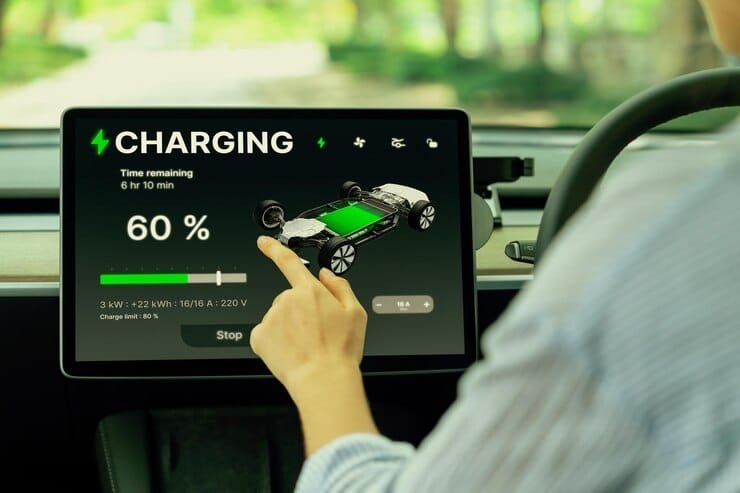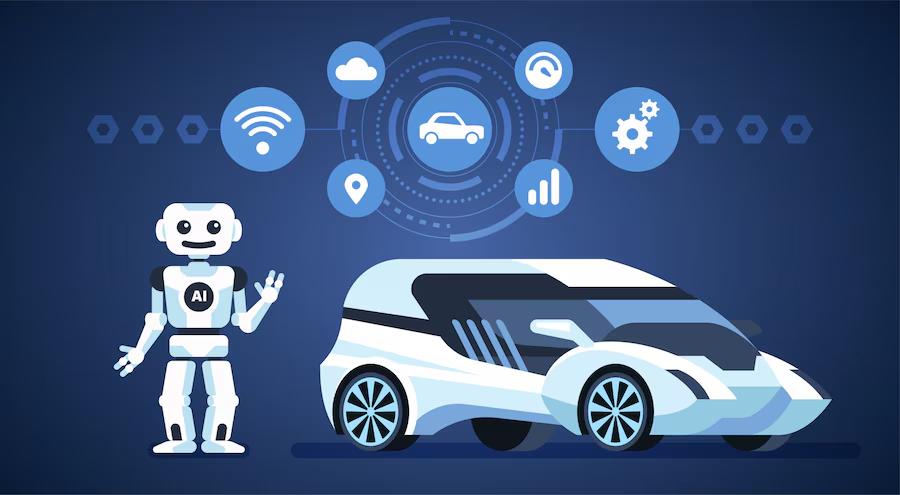The promise of self-driving cars, a future where accidents are a relic of the past, hangs precariously on the capabilities of computer vision. We’re told it’s just a matter of time, a few more algorithm tweaks, a bit more data—then, utopia on wheels. But I’m here to tell you that’s a dangerous delusion. The current state of computer vision, while impressive in isolated applications like facial recognition, is woefully inadequate for the complex, chaotic reality of navigating our roads. We’re pouring billions into a technology demonstrably unprepared for the task, a technology whose inherent limitations are consistently downplayed, even actively obfuscated.
Consider this: the success rate of current computer vision systems in controlled environments is undeniably high. Yet, translate that to a rain-lashed intersection at dusk, a child darting into the street, a poorly-lit construction zone, and the meticulously crafted algorithms crumble. The subtle nuances of human perception – context, anticipation, intuition – remain stubbornly elusive to even the most sophisticated deep learning models. Proponents will cite improvements in sensor fusion and edge computing, but these are mere bandages on a gaping wound. We’re relying on a system that struggles with adversarial attacks – simple stickers that can fool a vehicle’s AI into misinterpreting a stop sign – to solve a problem of exponentially greater complexity: the unpredictable behavior of human beings in unpredictable environments.
Some argue that continued data collection and advancements in processing power will solve these issues. While advancements are undoubtedly being made, the sheer volume and variety of unpredictable scenarios are virtually infinite. The computational cost of achieving true, robust safety, approaching human-level perception, may be practically insurmountable. This isn’t a criticism of the dedicated professionals in the field; it’s a stark assessment of the inherent limitations of the technology itself. The shocking truth is this: we’re dangerously close to deploying a technology that, at its current stage of development, is not only insufficiently safe but fundamentally flawed in its approach to a problem it may never truly solve. This isn’t about slowing innovation; it’s about responsible assessment and a frank discussion of the risks involved before the inevitable accidents become a tragic reality.
Thesis Statement: The Computer Vision market, while experiencing explosive growth, faces a critical juncture shaped by a confluence of positive and adverse trends. Success hinges on proactively navigating these forces, prioritizing ethical considerations, and embracing agile adaptation.

Positive Trends:
- AI-driven Automation & Efficiency: The integration of advanced AI algorithms, particularly deep learning, is dramatically increasing the accuracy and speed of computer vision applications. This fuels automation across industries, from autonomous vehicles (e.g., Tesla’s Autopilot) to automated quality control in manufacturing (e.g., Cognex’s industrial vision systems). This trend presents a massive opportunity for companies to develop and deploy sophisticated, efficient solutions.
- Edge Computing’s Rise: Processing visual data closer to its source (the “edge”) reduces latency, bandwidth costs, and reliance on cloud connectivity. This is particularly crucial for real-time applications like robotics and surveillance (e.g., Nvidia’s Jetson platform for edge AI). Businesses must invest in edge computing infrastructure and develop algorithms optimized for resource-constrained environments.
- Data Abundance & Improved Datasets: The explosion of readily available visual data, coupled with advancements in data annotation techniques, is fueling the development of more robust and accurate computer vision models. This is exemplified by companies like Scale AI, which provide high-quality data annotation services to train AI models. Businesses should prioritize access to high-quality, diverse datasets.
Adverse Trends:
- Ethical Concerns & Bias: Algorithmic bias in computer vision systems can perpetuate societal inequalities. Facial recognition technology, for instance, has shown documented biases against certain ethnic groups, raising significant ethical and legal concerns. Companies must proactively address bias in their algorithms through rigorous testing, diverse datasets, and transparent development practices, or risk reputational damage and legal repercussions.
- Data Privacy & Security: The increasing use of computer vision involves the collection and processing of vast amounts of sensitive visual data, raising serious privacy and security concerns. Data breaches and misuse of visual data can have severe consequences. Companies must prioritize robust data security measures, comply with relevant regulations (like GDPR), and implement transparent data handling policies to build trust with users.
- High Development Costs & Specialized Skills: Developing sophisticated computer vision systems requires substantial investment in research and development, specialized hardware, and skilled personnel. This creates a significant barrier to entry for smaller companies. Strategic partnerships, outsourcing, and investment in talent development are crucial for smaller players to compete effectively.
Actionable Insights:
- Embrace AI-driven automation and edge computing: Invest in R&D and acquire talent to leverage these technologies for increased efficiency and competitive advantage.
- Prioritize ethical considerations: Implement rigorous bias detection and mitigation strategies, establish transparent data handling practices, and proactively engage with stakeholders to build trust.
- Invest in data security: Implement robust security protocols and comply with relevant regulations to safeguard sensitive visual data.
- Foster strategic partnerships: Collaborate with other companies to share resources, expertise, and reduce development costs.
- Develop a strong talent pipeline: Invest in training and education to cultivate a skilled workforce.
The future of the computer vision market is bright, but success requires a strategic approach that balances innovation with responsible development. Companies that proactively address ethical concerns, invest in cutting-edge technologies, and build strong talent pipelines will be best positioned to thrive in this rapidly evolving landscape. Failure to do so risks being left behind.
Healthcare: Hospitals are leveraging computer vision to expedite diagnostics. AI-powered systems analyze medical images (X-rays, CT scans) significantly faster and, in some cases, more accurately than human radiologists, leading to quicker diagnoses and treatment plans. This isn’t about replacing radiologists; it’s about augmenting their capabilities, addressing the growing shortage of specialists, and reducing diagnostic errors—a compelling argument for any healthcare provider concerned with patient outcomes and efficiency. Counterarguments about job displacement are easily countered by highlighting the shift towards a collaborative human-AI model, freeing radiologists to focus on complex cases requiring human expertise.
Technology: Facial recognition isn’t just about unlocking phones; it’s a multi-billion dollar security market. Companies are deploying computer vision to enhance security measures in data centers and other sensitive areas. This technology provides a powerful deterrent to unauthorized access, improving safety and reducing the risk of data breaches – a critical concern for companies dealing with sensitive information. The argument that privacy concerns outweigh the security benefits is flawed; responsible implementation with strong data governance and adherence to privacy regulations negates these concerns.
Automotives: Self-driving cars rely heavily on computer vision. Autonomous vehicles use cameras and sensors to “see” their surroundings, interpret traffic signals, identify pedestrians and other vehicles, and navigate roads safely. The automotive industry is racing to perfect this technology, with the ultimate prize being safer, more efficient transportation. The argument that autonomous driving is too risky ignores the vast potential for reducing human error-related accidents, the leading cause of fatalities on the road.
Manufacturing: Computer vision is revolutionizing quality control in manufacturing. Automated systems can inspect products on assembly lines at incredible speeds, identifying defects far more quickly and consistently than human inspectors. This results in significant cost savings by reducing waste and improving product quality, a clear benefit for any manufacturing firm focused on efficiency and profitability. The argument that initial investment costs are prohibitive ignores the long-term returns on investment in improved productivity and reduced waste.
Retail: Retailers are using computer vision for a variety of purposes, from optimizing shelf-stocking to enhancing customer experience. AI-powered systems can track inventory levels, identify empty shelves, and even analyze shopper behavior to personalize product recommendations. This translates into enhanced operational efficiency and increased sales, a win-win for any retail business focused on growth. Concerns about data privacy are addressed through anonymization techniques and transparent data usage policies. The potential gains far outweigh the risks when executed responsibly.
Thesis Statement: Computer vision companies are leveraging a combination of organic and inorganic growth strategies since 2023, focusing on specialized AI model development, strategic partnerships, and aggressive acquisitions to solidify market dominance and address the evolving needs of the autonomous vehicle sector.
Organic Strategies:
- Specialization in Niche Applications: Instead of aiming for general-purpose computer vision solutions, companies are focusing on highly specific applications within the autonomous vehicle domain. For example, a company might specialize solely in pedestrian detection and prediction, using advanced sensor fusion and deep learning models to achieve unparalleled accuracy in complex urban environments. This allows for faster model iteration and superior performance compared to generalized approaches. A counterargument might be reduced market reach, but the high demand within the niche compensates.
- Enhanced Data Annotation and Synthesis: High-quality training data is crucial. Companies are investing heavily in innovative data annotation techniques, utilizing both real-world data and synthetically generated datasets to overcome data scarcity challenges and improve model robustness. For instance, a company may develop proprietary algorithms that automatically annotate sensor data from simulation environments, significantly reducing annotation costs and time while maintaining data quality. This addresses the high cost and time associated with traditional methods.
- Edge Computing Optimization: The demand for real-time processing capabilities in autonomous vehicles is paramount. Companies are focusing on optimizing their computer vision models for deployment on edge devices, reducing latency and dependency on cloud connectivity. This involves model compression techniques, efficient hardware acceleration, and optimized software frameworks. While cloud-based processing offers scalability, edge computing is essential for reliable, low-latency operation.
Inorganic Strategies:
- Strategic Acquisitions of Specialized Tech: Companies are acquiring smaller firms with expertise in specific computer vision areas to fill technological gaps and broaden their product portfolio rapidly. A major player might acquire a startup specializing in LiDAR data processing to integrate superior 3D perception capabilities into its autonomous driving stack. This accelerates innovation and reduces the time-to-market for new features, surpassing organic development timelines.
- Partnerships for Data Access and Hardware Integration: Collaborations with automotive manufacturers, sensor providers, and mapping companies are crucial. This grants access to valuable data sets, ensures seamless integration with existing systems, and facilitates the deployment of computer vision solutions in real-world applications. For example, a computer vision company might partner with a leading automotive manufacturer to co-develop and deploy a new advanced driver-assistance system (ADAS). This mitigates individual company risks and fosters market penetration.
These combined strategies reflect a shift toward focused innovation and strategic expansion within the competitive computer vision market, specifically addressing the challenges and opportunities presented by the autonomous vehicle industry.

Outlook & Summary: The Perilous Path to Autonomous Utopia
This article has laid bare the shocking truth: current computer vision technology, the very eyes of self-driving cars, is fundamentally flawed and nowhere near ready for the complex, unpredictable reality of our roads. While proponents tout incremental improvements and paint a rosy picture of a fully autonomous future within a decade, the reality is far grimmer. The core issue isn’t a lack of processing power or data – it’s the inherent limitations of attempting to replicate human perception and judgment with algorithms. We’re trying to teach a machine to understand nuance, context, and the ever-shifting tapestry of human behavior, a task orders of magnitude more complex than simply recognizing objects in a controlled environment.
The next 5-10 years will likely see incremental improvements in specific computer vision tasks, perhaps leading to more advanced driver-assistance systems. But the leap to fully autonomous vehicles remains a chasm, a technological Everest yet to be conquered. Expect to see continued investment, more sophisticated algorithms, and perhaps even breakthroughs in areas like sensor fusion and edge computing. However, the fundamental challenges—handling edge cases, mitigating unforeseen circumstances, ensuring fail-safe mechanisms—remain largely unsolved and arguably unsolvable with current approaches. To believe otherwise is to succumb to technological hubris.
Counterarguments often point to the success of computer vision in other fields. While true, these applications operate within far more controlled and predictable environments. The chaotic, unpredictable nature of human interaction on the road represents a unique and almost insurmountable challenge. We must resist the alluring siren song of a fully autonomous future built on fundamentally flawed technological foundations. The focus should shift from chasing an unrealistic timeline to investing in safer, more realistic near-term solutions like enhanced driver-assistance features and robust safety systems that complement, rather than replace, human drivers.
Are we willing to gamble human lives on the promise of a technology that is demonstrably inadequate for the task at hand?






